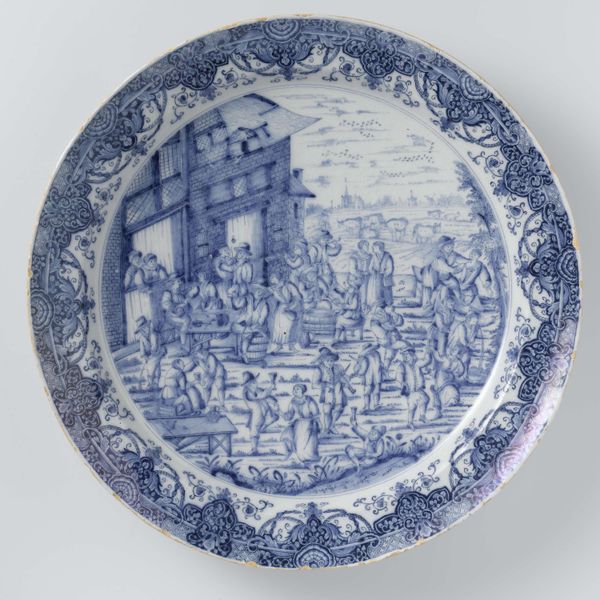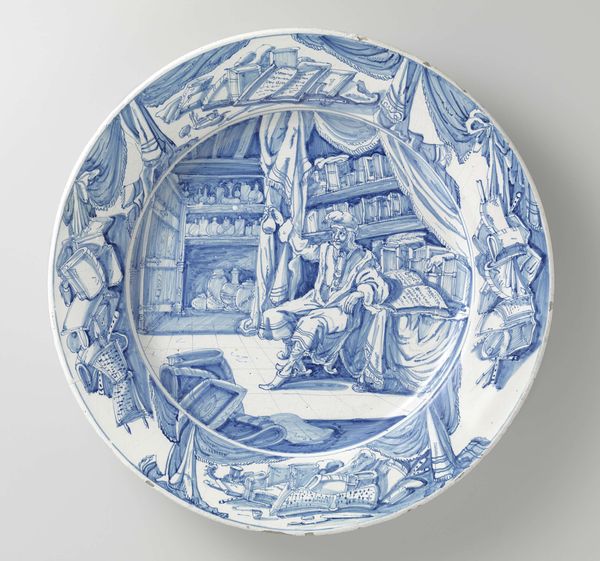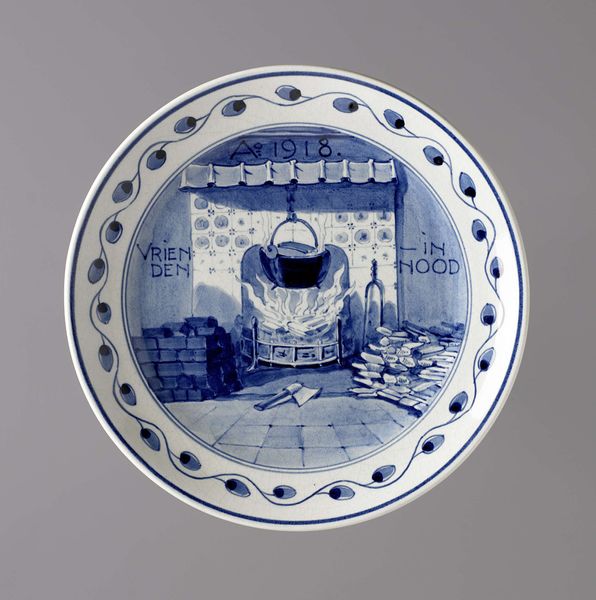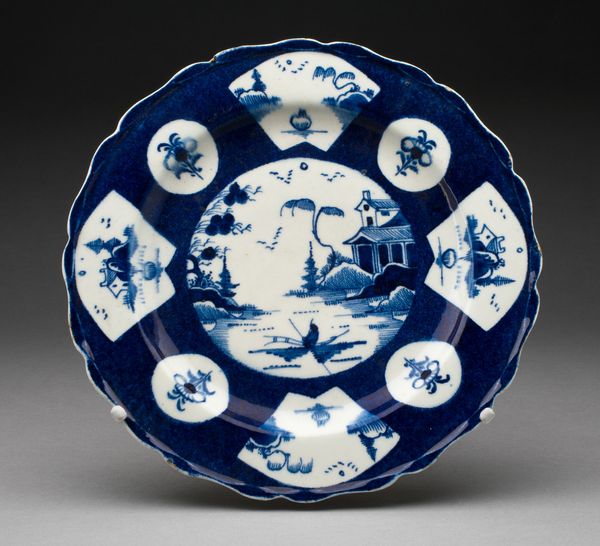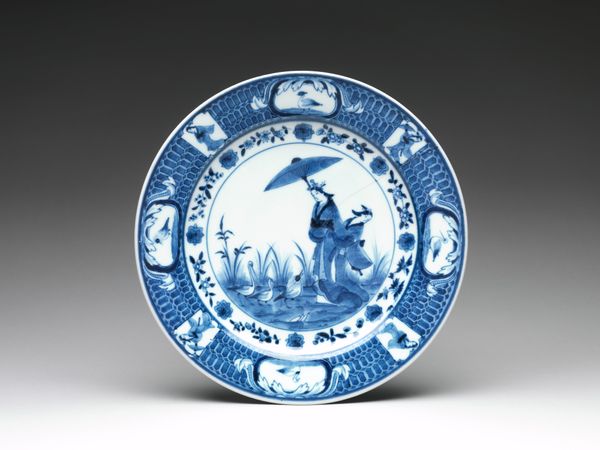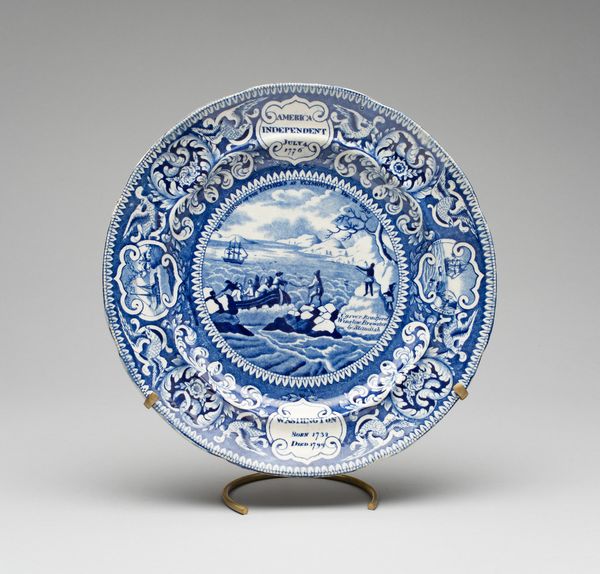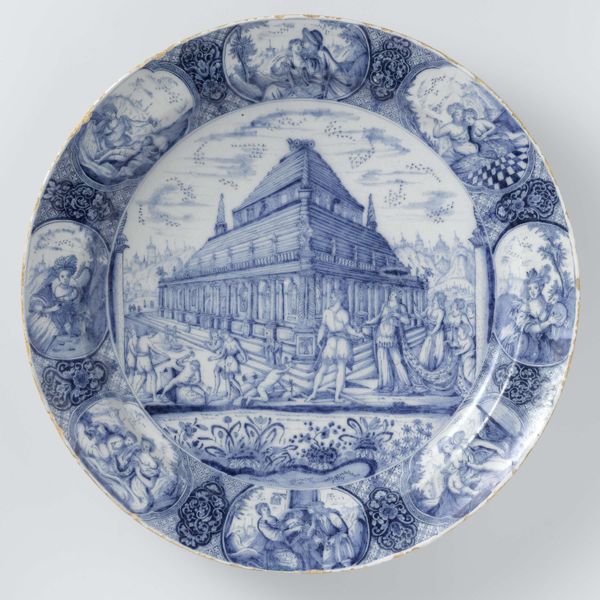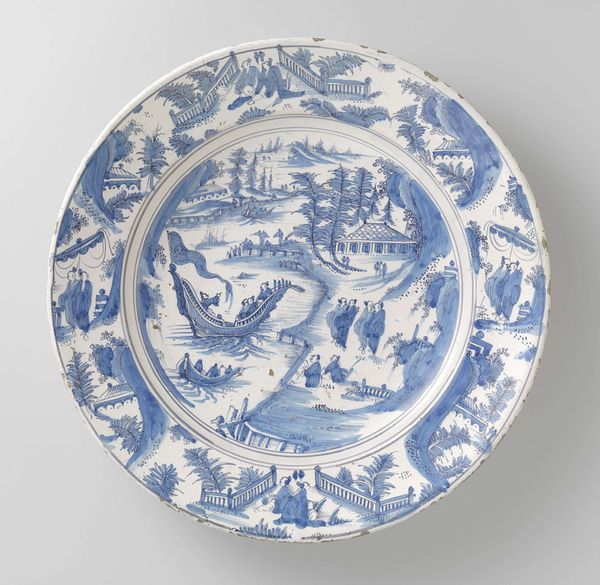
mosaic, ceramic, fresco, sculpture
#
mosaic
#
landscape
#
ceramic
#
fresco
#
11_renaissance
#
sculpture
#
decorative-art
#
italian-renaissance
Dimensions: Overall (irregular height, confirmed): 2 1/4 × 18 × 18 in. (5.7 × 45.7 × 45.7 cm)
Copyright: Public Domain
Curator: Here we have an Italian Renaissance ceramic piece titled "Dish with a Landscape," dating from 1540 to 1550. Editor: It’s mesmerizing, really. Just this striking monochrome blue scene, perfectly captured on a domestic object. It looks simultaneously inviting and a little forbidding. Curator: The entire scene is painted in shades of blue and white. Can you unpack a bit about why you feel it is "forbidding"? Editor: There’s a formality, maybe, an implied distance despite the detail. It's clear that such dish wasn't designed for daily, unremarkable eating, it makes me wonder who created such object and its socio-economic place, maybe part of a wealthy table setting that elevated dining to a cultural statement. I wonder about the labor in creating something like this, of a careful layering process. Curator: Good point. Considering the broader cultural symbolism, the landscape is not just any landscape. It invokes the idealized views of harmony and order associated with Renaissance thought. Look at the buildings, the waterways—they echo the symbolic weight of human progress over the natural world, a testament to civilization and prosperity. Editor: Yes, civilization neatly arranged and controlled. What kind of materials and pigments were used? Where were they sourced, and how did that influence the final product? Did the artisan use fresco techniques to replicate that medium's effect on ceramics, creating an imitation of "high art"? It opens a whole world of production considerations that shaped the finished artifact. Curator: The blue, of course, conjures the heavens, fidelity, trust… virtues esteemed by those who originally owned the piece and their counterparts, thus lending this daily object the sublimity that relates the person to greater matters beyond their everyday life. Editor: Absolutely. It also draws attention to itself as an object. The careful choice of material and technique points toward consumption but at a higher level where, in fact, is not necessarily meant to be used but displayed. I find this kind of pieces an important clue on the history of product design, a proto-industrial application to cultural meaning. Curator: Looking closely, it seems a dance of contrasts between symbolism and reality, technique and expression. Editor: Precisely, making this seemingly simple dish a repository of social narratives waiting to be examined under a microscope.
Comments
No comments
Be the first to comment and join the conversation on the ultimate creative platform.
